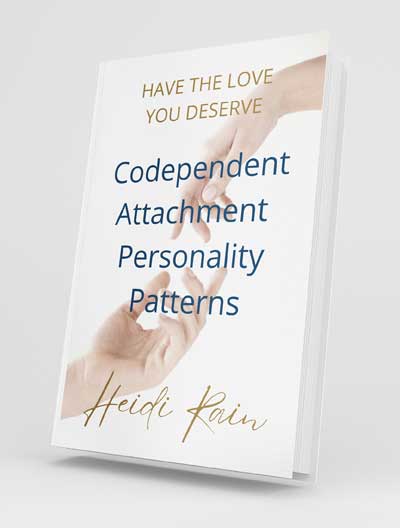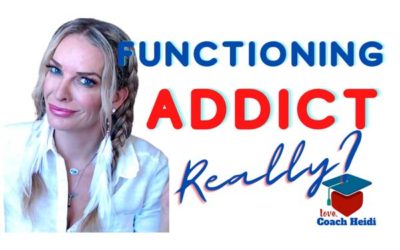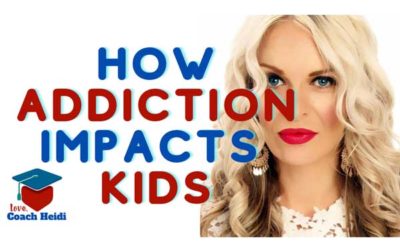|
How withholding sabotages intimacy and prevents you from having the relationships you want. When we are born into a family of dysfunction, we find a way to function. We develop a way of being that allows us to survive, thrive, connect, or cope. I call these Attachment Personality Patterns (APPS). Today, we are discussing the APP of the Withholder.
It is not my intention to diagnose you. I am simply giving you a framework to identify patterns of codependency behavior so that you can break free from these self destructive patterns and in turn, create the loving, mutually beneficial, healthy relationships you deserve.
That being said, there are 5 key indicators of a Withholder. Although there are certainly more than 5 ways this shows up, I find these 5 to be prevalent in most Withholding Types. You do not need to identify with all 5 to type as a withholder. You may simply identify strongly with 1 or 2 key indicators.
The important thing is that we cultivate awareness around how withholding shows up in your relationships and sabotages your connections with others. With that awareness, you will be well on your way to breaking free from this Pattern.
Patterns are not pathological. And they are not fixed. You also may identify with more than one Personality Pattern. The important thing to know is that you can change your Attachment Personality Pattern at any time simple by deciding to begin your codependency recovery journey.
Key indicator #1. Feelings and vulnerability are difficult for you.
When someone asks you how you feel, you normally answer with”I think.” or “I think I fee.” It’s difficult for you to identify what you are feeling. Perhaps you are so used to suppressing your feelings that you have lost touch with them.
Withholders do feel and they feel deeply. But they have trouble expressing and regulating their feelings. You may find your feelings emerge at inopportune times. For example, you may get emotional and feel like crying at a business meeting, but later scolds you for being “weak.”
This is very common because most Withholders believe that vulnerability is weakness.
Key indicator #2. You create distance from others
Withholders desperately long for intimacy and closeness, but they are fearful of letting people in. So, they keep everyone at an arm’s distance.
Withholders sabotage intimacy and they do this with distancing techniques.
One of the techniques is withholding affection, attention or approval. If a withholder does get vulnerable and has a meaningful connection, they will find that they end up creating an argument shortly after.
They do this to restore the distance. Most withholders experience a vulnerability or intimacy hangover when they share a lot of themselves.
Key indicator #3 Poor boundaries around sex
Obviously there is nothing wrong with having as much sex as you like with whomever you like. But for a withholder, they’re more likely to have sex with their partner when they don’t feel like it. Think of it this way. It requires more intimacy and vulnerability for a withholder to share their feelings around sex than to actually have it.
Withholders want intimacy, but often settle for sex. Sex becomes a parody for intimacy and a way to feel connected without actually getting emotionally vulnerable.
Some withholders can end up having more sexual experiences than other types for this reason. In an attempt to connect and experience intimacy, they may jump from partner to partner thinking eventually, they will find fulfillment. But they never do because fulfillment isn’t found in others.
As a withholder, you may find it easier to share your body versus share your true feelings.
Key indicator #4 Poor communication.
Let’s say a withholder gets into therapy or coaching. They are very unlikely to “offer up” intimate details of their life. In fact, they will usually only “go there” when asked directly. And even then, a withholder is likely to report a childhood in which “Everyone did the best they could. Whatever. We survived. I moved on. I’m over it.”
Though most withholders come from significantly difficult backgrounds, they may not see it that way or be reluctant to “open that can of worms.” This is because the thought of going there brings up fear of getting lost in the painful emotions it could create.
In relationships, withholders have a mind reading fantasy. They think that when the right person comes into their life, they will magically know what the withholder feels, thinks and needs.
They live their life in a hard shell waiting for the right person to crack them open and make it safe and easy for them to be vulnerable. Of course, this never happens because even when they do find someone who inspires them to share deeply, they may pull back because of that intimacy hangover noted earlier.
Key indicator #5 Binge Restrict Cycling.
In my opinion, all restriction breeds compulsion.
And withholders usually engage in some form of hot and cold, back and forth, all or nothing behavior.
You may find that what you are with a person, you initially feel attracted and connected and are eager to spend time with them. But at some point, your attraction fades; you find reasons not to like them and you lose your desire to be with them at all.
Often, you feel like ships passing in the night with partners.
This cycle can also show up with your ambition and drive to make your dreams real. Sometimes you’ll be all in, hyper focused and super responsible, getting things moved off of your to do list. Only to be followed by a crash and burn. You want to lie in bed all day with the covers over your head and be super irresponsible.
It can happen in friendships. You’ll want to spend time with your friends but then find you make plans only to regret it and find excuses to lie to get out of spending time with them.
Or it can be a literal binge/restrict cycle with substances like food or alcohol.
Now that I’ve identified the 5 key indicators, I want to discuss the point of origin for this Attachment Personality Pattern.
Likely, you were born into a family that was dysfunctional in some way whether it is abusive, alcoholic, or addicted. The main theme was uncertainty, unreliability and unpredictability.
You wanted the love of your primary caregiver(s), but found that loving them meant you got hurt in some way. So while you longed for the closeness intimacy could provide, you simultaneously feared it. You inevitably ended up abandoned, rejected or hurt.
So today, one of the core internal battles a withholder faces is the deep need for intimacy and the simultaneous fear it will destroy her/him.
Withholders don’t necessarily fear abandonment because their strategy is to never get too close to anyone in the first place so it won’t hurt when /if they do leave.
They believe that by keeping distance, they won’t love too much. Meaning, if they did allow themselves to get fully vested in someone, the pain of their inevitable betrayal would be too much to bear. So they maintain distance to avoid feeling to vested.
What is the path to recovery for a withholder?
If you recognize that you fit this pattern, the work begins with your recovery journey. That’s why I created LYFE School which stands for Love Yourself First Empowerment. In LYFE School, I teach the 7 tenets to overcoming all codependent Attachment Personality Patterns. You learn to speak your truth and share your authentic self with those you love. You learn to open and allow others to love you the way you want to be loved. You work through the old programming and fears that have kept you from truly connecting with others.
If you are interested in LYFE School you can find more out here. Love, Coach Heidi
|





0 Comments